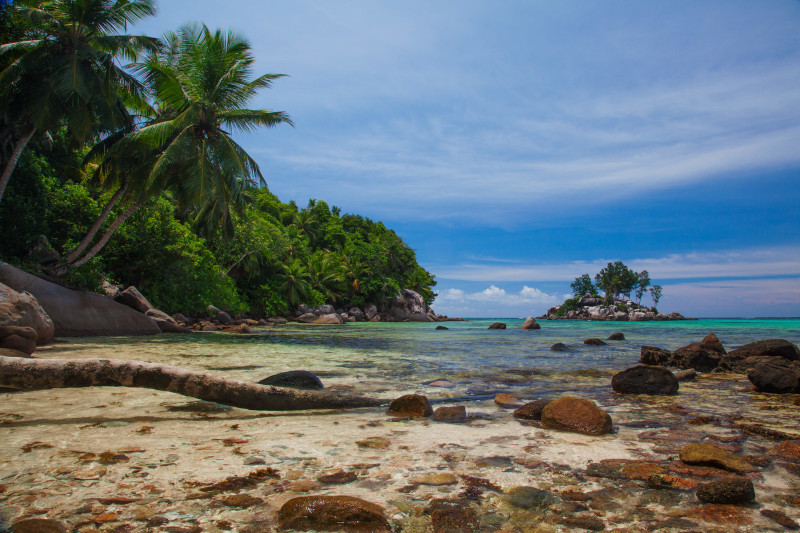
Mahé Facts
- The deceptively short term of Mahé serves as the only consistently used common name for this breathtaking creation of geological processes. Some individuals do, however, occasionally refer to the stunning formation as the main island, since it forms part of a larger group.
- Archaeological evidence indicates that the first humans to discover and inhabit this gorgeous island consisted of seafarers. This location of the site first occurred sometime between 200 – 300 AD. Though not precisely known, it’s believed that they were Austronesian in origin.
- The first known sighting of the natural wonder by European explorers, though, did not take place until much later, 1609. At that time, the East India Trade Company sent expeditions to the site. But, they did not establish any permant presence on the island at that time.
- The site remained uninhabited by Europeans until the French claimed possession of it, which occurred in the mid-18th century. The colonial period saw the establishment of settlements and plantations on Mahé, which eventually led its development and population growth.
- Its population reflects great cultural diversity, with prevalent influences from Africa, Europe, and Asia. It’s also well known for its Creole culture, a blend of African, European, and Indian influences. Traditional music, dance, and cuisine are integral parts of its cultural identity.
Related Articles
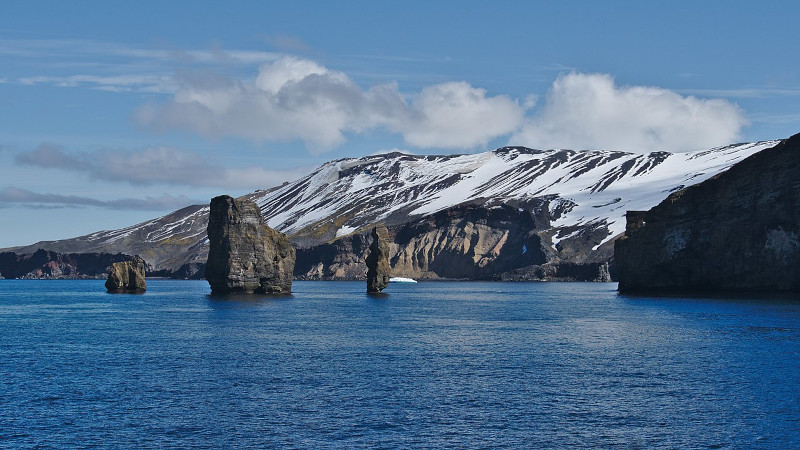
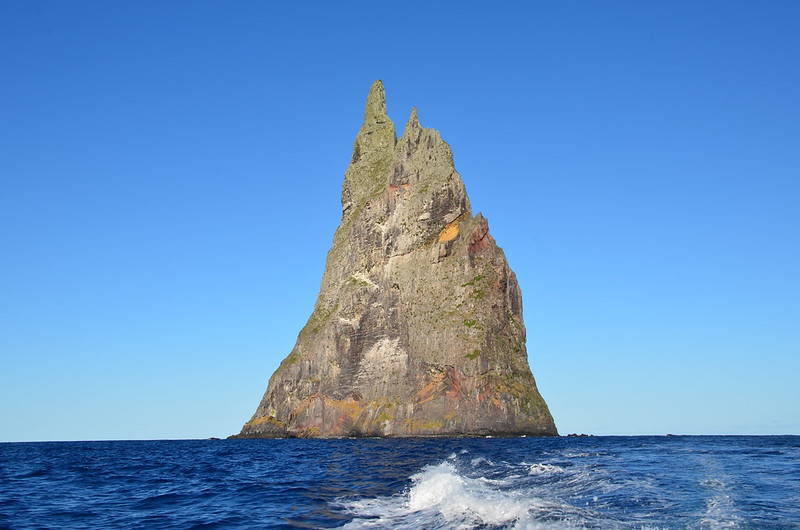
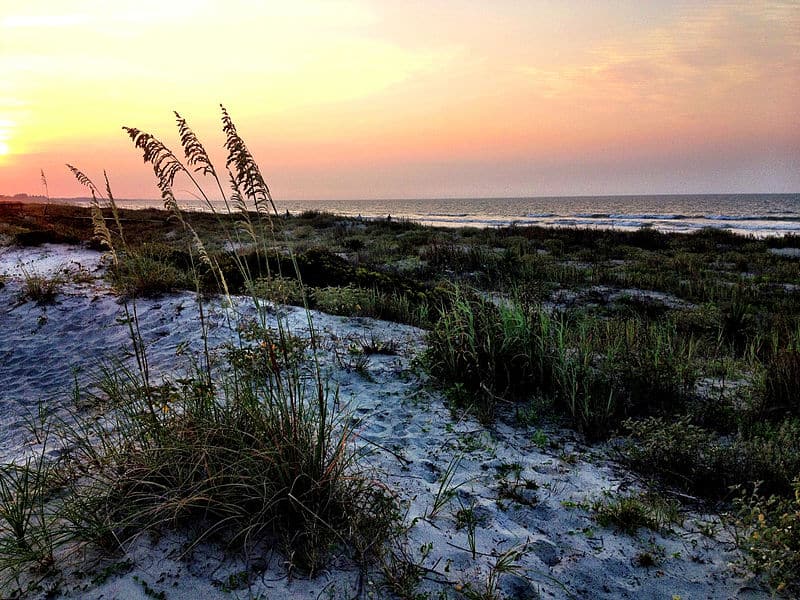
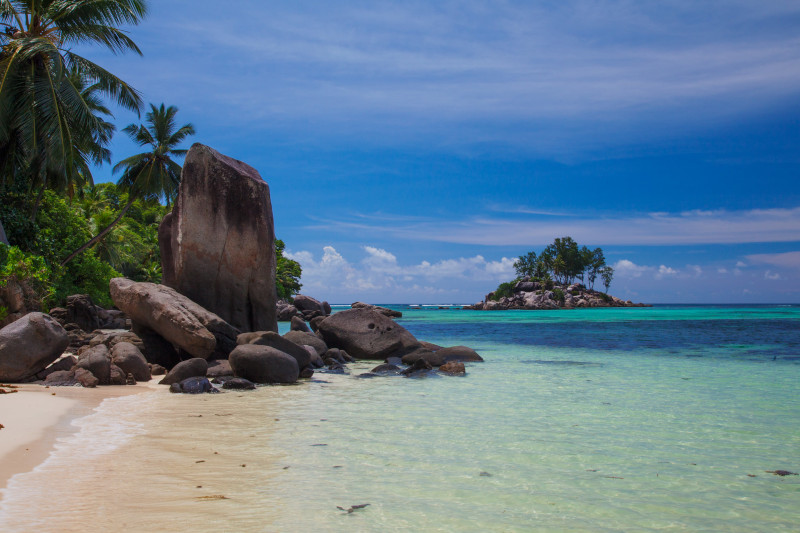
Mahé Physical Description
The magnificent Mahé justifiably captivates and mesmerizes those visitors fortunate enough to view it, with its amazing beauty and splendor. Yet perhaps the most surprising aspect of this is the fact that it does so for such a wide variety of reasons. Despite this, though, it’s not overly large.
The breathtaking isle itself has an understandably irregular shape. In total length, it measures approximately 16.2 mi (26 km). Its width, meanwhile, measures roughly 10.6 mi (17 km). The remarkable work of Nature and geology also boasts an area equaling about 60.7 sq mi (157.3 sq km).
Within its confines, however, the marvel additionally displays numerous types of separate features to boggle the mind with their marvels. These include towering granite peaks that rise dramatically from the island’s lush interior. Those mountains include Morne Seychellois, at 2,969 ft (905 m).
It also boasts over 69 mi (111 km) of stunning coastline. Along this, one finds many beautiful beaches composed of powdery white sands and crystal-clear turquoise waters. Beaches like Beau Vallon, Anse Intendance, and Anse Royale are popular for sunbathing, swimming, and water sports.
Nature further blessed the incredible Mahé with yet more wonders. Another of these are the perpetually amazing coral reefs surrounding it. These locations teem with marine life, and continue to serve as home to a large array of colorful fish, sea turtles, and many other marine creatures.
Also along the coastline, rugged cliffs give way to secluded bays and coves in multiple locations, creating picturesque vistas. And then, further inland, other beauties await. Hidden waterfalls cascade down rocky slopes, further adding to the island’s already remarkable natural beauty.
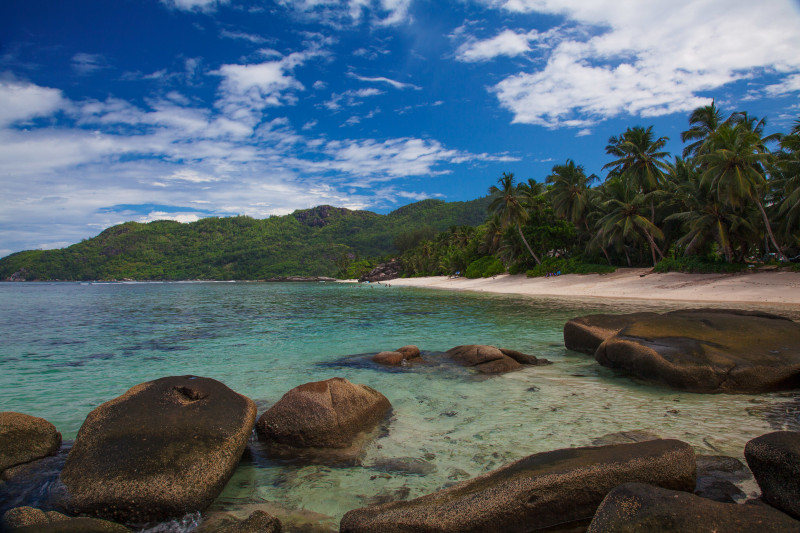
Mahé Location, Formation, and Ecology
The bewitching beauty that forms the island of Mahé formed in a region of the globe already well known for its astonishing abundance of natural beauty. That, though, typically consists of the many various species living in the marine waters surrounding the remarkable formation itself.
This island actually forms part of the world-renowned archipelago known as the Seychelles. It’s situated in the Indian Ocean, approximately 994 mi (1,600 km) off the coast of Africa. The natural wonder also lies northeast of Madagascar and about 1,000 km (621 mi) east of Tanzania.
Its formation, like the rest of the beautiful archipelago, is primarily attributed to powerful geological processes that occurred many millions of years ago. The island, along with the others in the Seychelles, owes its origin to the movement of tectonic plates and subsequent volcanic activity.
The granitic rocks comprising it are thought to have originated from magma that intruded into the Earth’s crust at some point during the breakup of the ancient supercontinent of Gondwana. This process began roughly around 750 to 500 million years ago during the Precambrian era.
Nature, however, still wasn’t finished with this wonder. Over time, the massive granite intrusions cooled and solidified, forming the foundation of the islands. Subsequent geological processes, such as erosion and sea level changes, sculpted the landscape into the island we now see today.
Despie being a highly popular tourist destination, the amazing island of Mahé still boasts a fully thriving, rich, and diverse ecology. That’s true both on land and in the surrounding marine waters. This system consists of various types of both lush tropical vegetation and unique wildlife.
Much of its interior continues to be covered by lush tropical rainforests, which serve as home to a wide variety of plant and animal species. These remain characterized by tall trees, lush undergrowth, and a canopy that easily provides habitat for numerous birds, insects, and small mammals.
It’s also home to an impressive array of plant species, many of which evolved as endemic to the archipelago. One of the most iconic plants found here is the Coco de Mer palm, which produces the largest seed in the plant kingdom. Other notable plant species include the amazing Jellyfish Tree.
Features Sharing Its Region
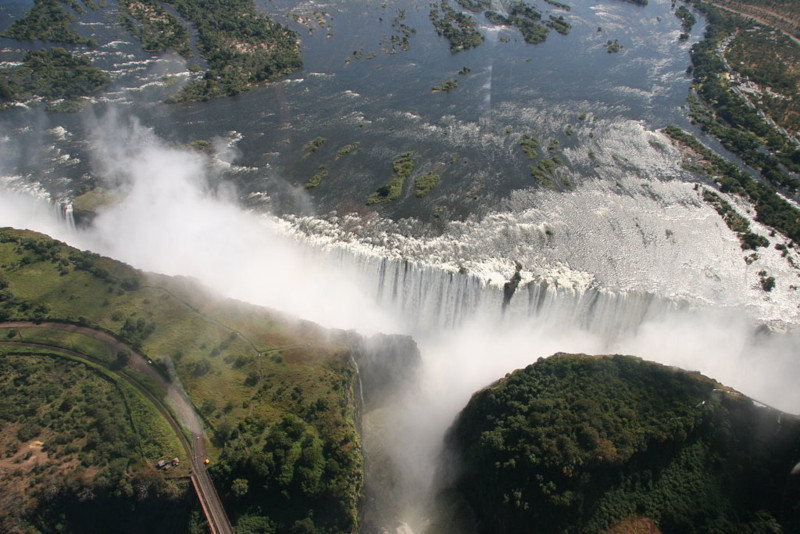
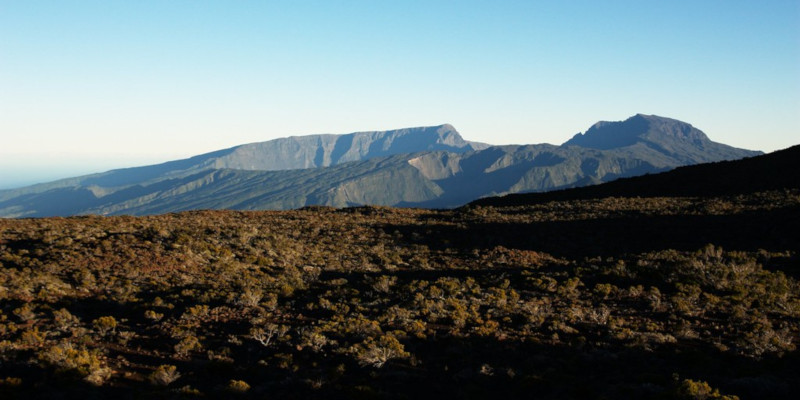

Check out our other articles on 5 Remarkable West Virginia Invertebrates, Millaa Millaa Falls, Cape Porcupine, Common Water Hyacinth, Weka, Achemon Sphinx Moth, Purple Frog, Mugger Crocodile









Leave a Reply